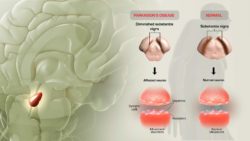CRISPR (Gene editing) technology boosts hopes to find HIV cure
The causative organism of the deadly AIDS, Human Immunodeficiency Virus (HIV), affects every individual in a unique manner. For some, the immune system effectively resists the infection. For most others, a specific genetic mutation occurs in the CCR5 gene and many other genes that either controls the virus’ ability to enter immune cells or control how the virus tricks cells into expressing its genes.
Researchers at the University of California San Francisco used CRISPR-Cas9 tool to investigate human immune cells’ resistance to HIV.
Clustered regularly interspaced short palindromic repeat (CRISPR), is a part of the bacterial immune system that have the memory of the viruses that have previously infected the bacteria.
The scientists used this cell-editing platform to mutate different genes in hundreds of thousands of immune T cells from healthy volunteers and then exposed these cells to the virus to find out which ones resisted. They found that mutations in two genes, CXCR4 and CCR5, offered some protection to HIV. The finding was confirmed when the inactivation of these genes successfully prevented the virus from integrating into T cells. This research will now form the basis for further studies into whether this can be converted into an effective treatment.
CRISPR-Cas9 is, at present, the simplest, most effective and accurate tool used to conduct genetic manipulations- whether by editing parts of the genome, cutting them out or adding some to DNA sequences.
The technique is based on the use of two molecules that work together to change the DNA:
- Cas9 enzyme, a restriction enzyme that cleaves the two strands of DNA at a specific location.
- gRNA, whose task is to guide Cas9 to the desired location of the genome.
These excision molecules were able to stop the virus replication in almost 90% of infected human T-cells in the laboratory. The procedure not just eliminated the infection but also rendered protection for the cell.
The scientists’ idea was to get inspiration from the immune system of all these different people in order to edit immune cells with CRISPR-Cas9 and see which of the edited versions could resist an HIV infection.
While the present antiretroviral medications are effective against AIDS virus, they are incapable of suppressing the replication of virus after they are stopped. Gene editing can help remove this ‘memory’ so the viral cells can no longer reproduce even if medication stops. Moreover, antiretroviral drugs have side effects and can cause Alzheimer's disease, early aging, and heart diseases.
Incidence rates of HIV infection continue to rise at an alarming rate. If clinical studies prove to be successful, gene editing can be posed as the treatment of choice, as it has several pluses compared to antiretroviral therapies available today.

Parkinson’s disease: What goes wrong?
Early signs of Parkinson’s disease are mild and may go unnoticed. No single one of these signs means that you should worry. But if your loved one shows more than one sign from the following, you must take them to a doctor..Read More..








